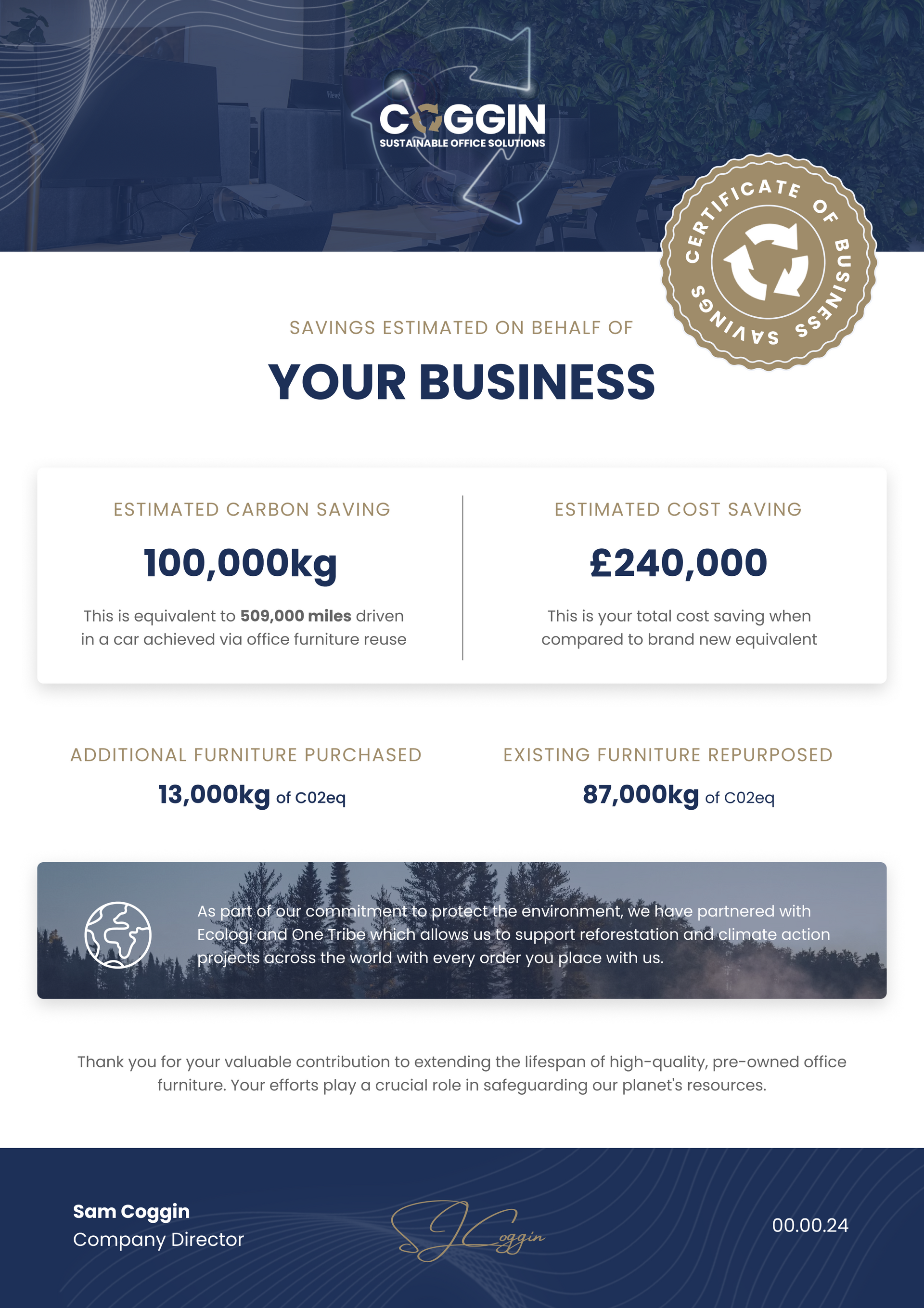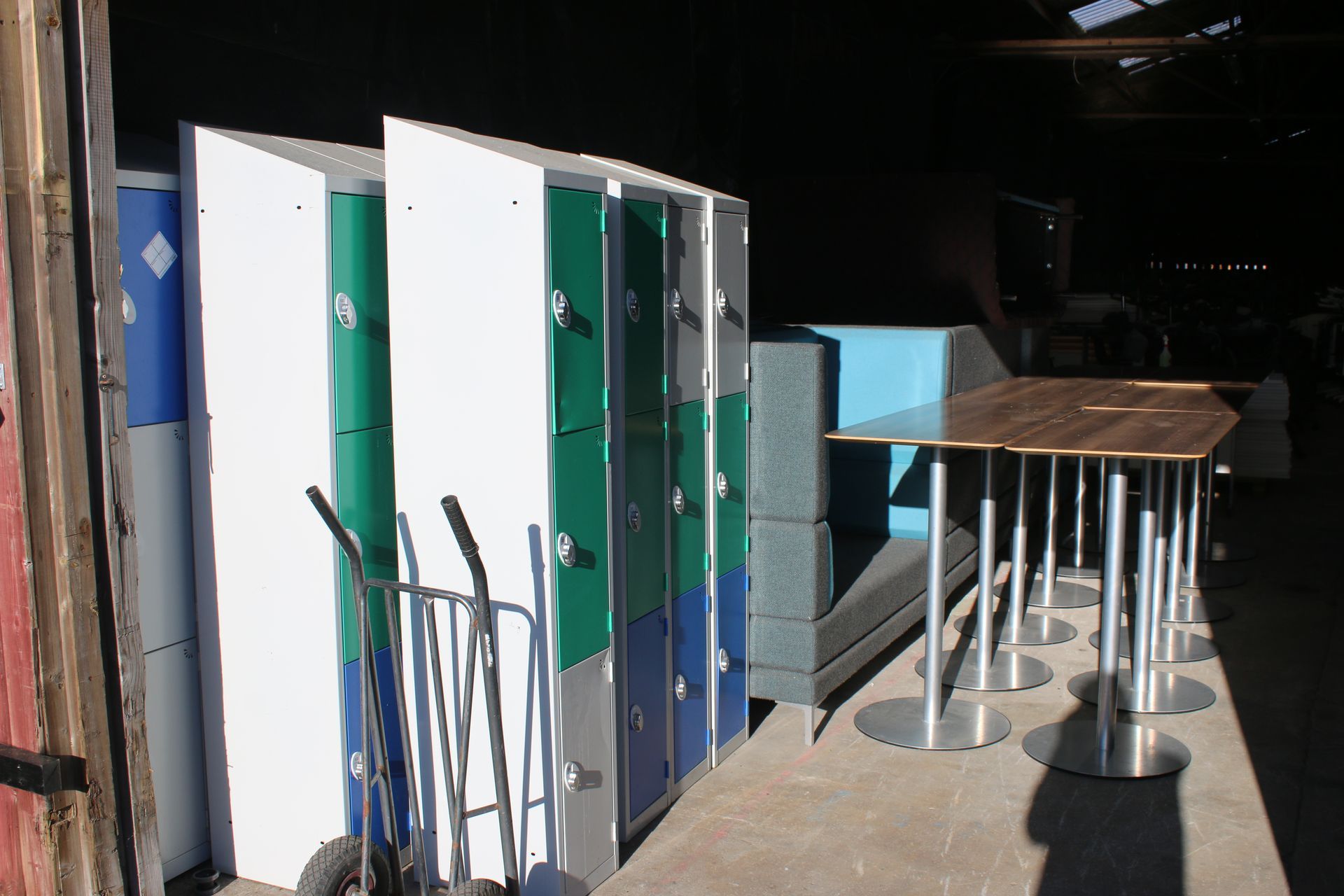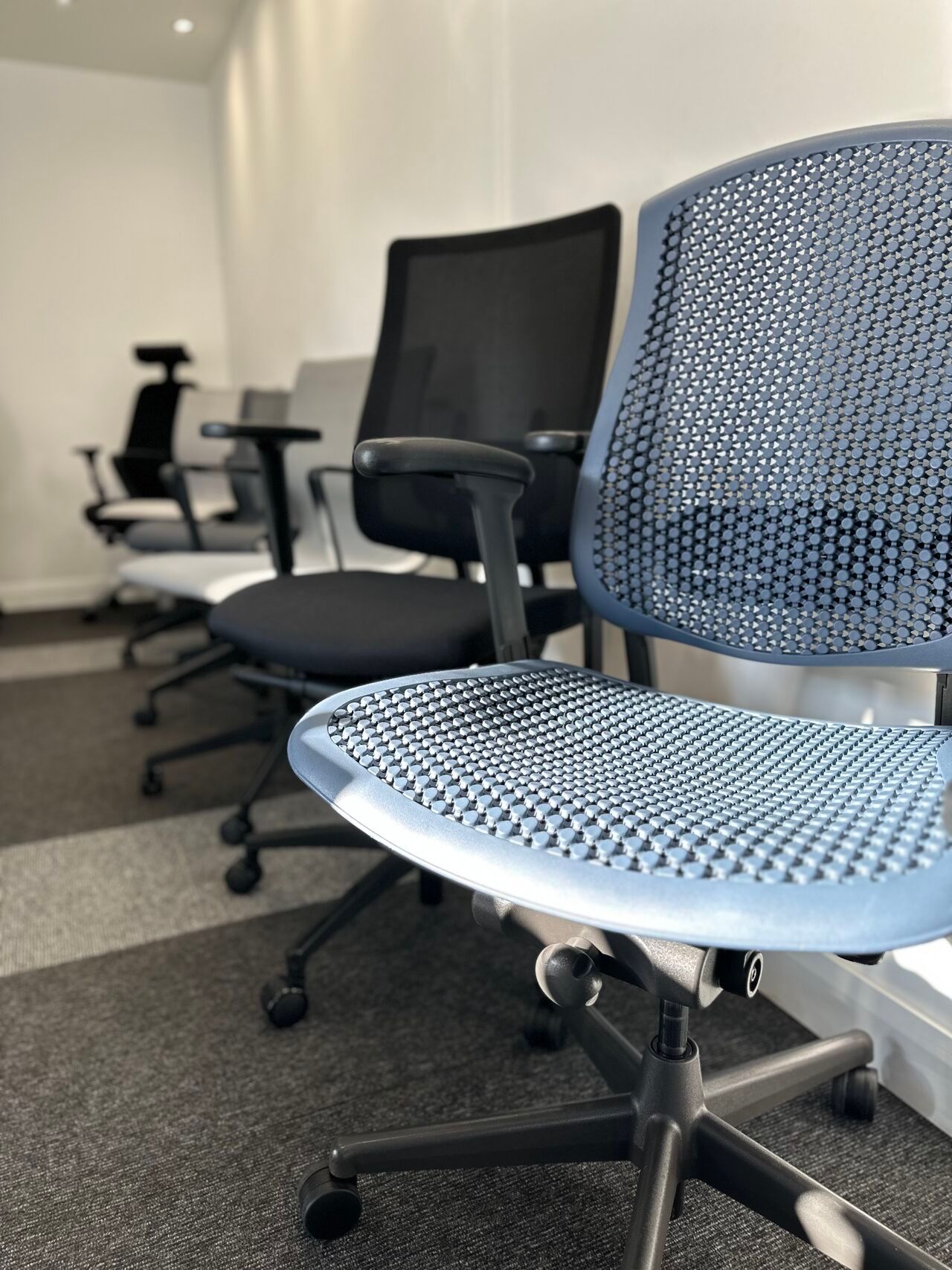Achieving Corporate Sustainability Targets through Office Furniture Recycling
Whether you're planning on updating your current office facilities, moving offices, or responsible for refurbishment projects within your business, there are sure to be many factors and pressure that go into making those important upcoming decisions - cost, quality, delivery timescales, and most recently, a mounting pressure to meet corporate sustainability targets.
With the increasing emphasis on
ESG
criteria, stakeholders are looking more closely at how businesses address their environmental impact. How do you balance these growing environmental responsibilities with budget constraints? The answer might be simpler than you think, and it starts with something you already manage every day-your office furniture.
Why Office Furniture Decisions Matter
When was the last time you calculated the environmental impact of your office furniture decisions? Most facilities managers we work with are surprised to learn that a single office chair produces more CO2 during manufacturing than their daily commute for an entire month. Now multiply that by every chair, desk, and workstation in your office, and it becomes clear: your furniture choices massively impact sustainability targets.
A study by the
Sustainable Furnishings Council found that the furniture industry is responsible for
2-5%
of global carbon emissions. In the UK alone, over 1.2 million desks and
1.8
million
office chairs end up in landfills annually, with the majority being suitable for refurbishment. These statistics underscore the need for a change in how companies manage office furniture.
If you’re eager to boost your eco-credentials,
contact us
and let’s discuss your options.

Breaking the 'Buy New' Cycle: The Circular Economy
The conventional approach of repeatedly buying new furniture not only strains facility budgets but also contradicts corporate sustainability goals and ESG expectations. As facilities managers, you have the opportunity to shift towards a circular economy-where furniture is reused, refurbished, and recycled. This approach not only helps reduce costs but also allows you to meet your sustainability targets and demonstrate your commitment to environmental responsibility.
At Coggin SOS, we help facilities teams in breaking this costly cycle by providing quality refurbished office furniture that meets professional standards. By choosing refurbished options, you can make a positive impact on your carbon footprint while staying within budget.
The Triple Bottom Line: Sustainability, Cost, and Space Management
Our clients consistently report three major challenges:
1. Meeting stringent sustainability targets
2. Managing escalating furniture replacement costs
3. Dealing with limited storage space
At Coggin SOS, our furniture recycling and refurbishment services are specifically designed to address these needs. Here’s how our circular approach benefits facilities teams:
1. Meeting Sustainability Target
- Reduce your carbon footprint
- Divert large amounts of waste from landfill - essential for ESG reporting
- Support circular economy initiatives that increasingly matter to stakeholders
2. Controlling Costs
- Save 50-80% on furniture replacement costs
- Reduce waste disposal fees
- Minimise storage costs for surplus furniture
3. Space Optimisation
- Eliminate the need for long-term furniture storage
- Maintain clean, organised facilities
- Enable flexible space management

Measuring Impact for Your ESG Goals
Understanding how furniture recycling and refurbishment impacts your organisation's sustainability targets requires looking at three key metrics:
Carbon Footprint Reduction
Choosing refurbished furniture reduces your carbon footprint by up to 50% compared to new purchases. For a typical 100-person office refresh, this translates to approximately 12 tonnes of CO2 saved - equivalent to taking 26 cars off the road for a month.

Waste Reduction
Our circular economy approach ensures that up to
100% of your existing furniture either returns to service through refurbishment or is recycled into new materials, substantially reducing your waste-to-landfill metrics.

Resource Conservation
Each piece of refurbished furniture conserves raw materials and prevents manufacturing emissions. Our detailed environmental impact reports quantify these savings, providing concrete data for your
ESG
reporting and environmental compliance documentation.

Simplifying Sustainable Furniture Management
We've learned that the best sustainability initiatives are the ones that simplify your work, not complicate it. That's why we handle everything:
When you work with us, you'll have a dedicated partner who understands the pressures of facilities management. We’ll coordinate everything from initial assessment to final installation, providing clear documentation of environmental impacts and cost savings along the way.
Each project includes a dedicated savings certificate and report, documenting all carbon, waste, and cost savings. These are comprehensive analyses you can pass on to your clients and ESG managers.
For further inquiries, contact us
here.









